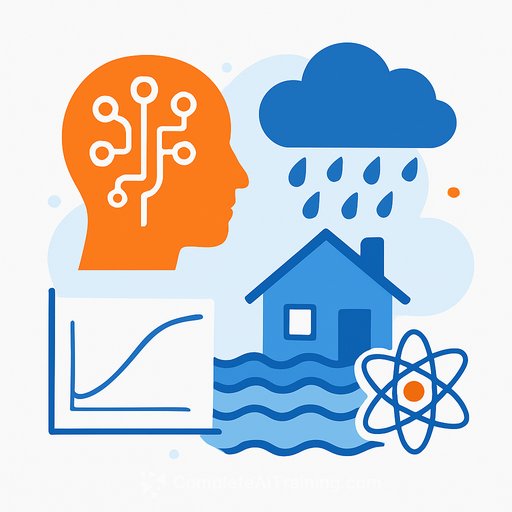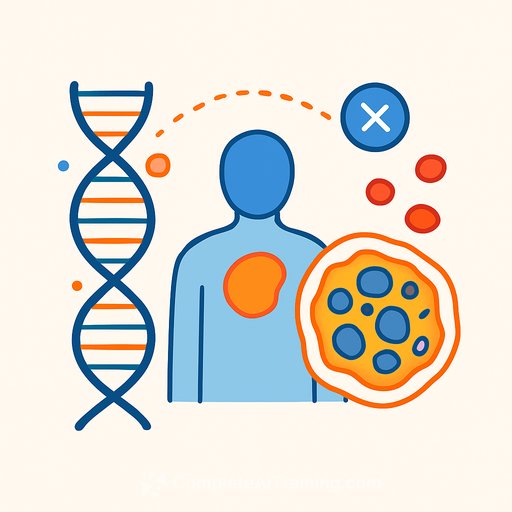AI System Boosts Accuracy of National Flood Predictions
A study in AGU Advances reports that a neural-network "error corrector" called Errorcastnet, layered on top of NOAA's National Water Model (NWM), improves national flood forecasts by a factor of four to six across 1-10 day lead times. The result points to a practical path: use machine learning to correct systematic biases while keeping physics-based hydrology at the core.
Rather than replacing proven systems, the team integrated an attention-based LSTM with the NWM to learn from historical mismatches. The hybrid framework delivers probabilistic forecasts in minutes, opening the door to faster, more reliable alerts at continental scale.
Pairing Physics With Machine Learning
The NWM simulates river and stream conditions across the contiguous U.S., ingesting data from nearly 11,000 gauges along with meteorology, land cover, and urban drainage. Errors arise where processes are under-resolved or local data are sparse.
Researchers trained Errorcastnet on years of NOAA rainfall, streamflow, and flood records to identify where forecasts tend to drift. "So especially for floods, the performance of the pure AI model is quite poor," said lead researcher Vinh Ngoc Tran. "The most important thing we need to be concerned about is ensuring prediction accuracy for flood events that can cause significant damage."
How Errorcastnet Works
Errorcastnet functions as a correction layer: it estimates the NWM's likely error for each lead time and adjusts the forecast accordingly. The model uses an attention-based LSTM to focus on the most informative segments of meteorological and hydrologic time series.
To quantify uncertainty, the system applies Monte Carlo dropout, producing an ensemble of outcomes rather than a single point estimate. The output is a probabilistic streamflow forecast that reflects both expected bias and spread.
What the Evaluation Shows
Performance was assessed using hydrologic metrics such as Kling-Gupta Efficiency, peak error, and time-to-peak error. Across these measures, the hybrid approach outperformed both the standalone NWM and a pure AI baseline.
The model corrects biases that are systematic and learnable, while acknowledging limits where physical constraints or missing observations dominate. "You can't throw away physics," said co-author and hydrologist Valeriy Ivanov. "You have to account for dominant physical processes in your predictive model."
Operational Impact
The study indicates the framework can generate national-scale ensembles within minutes, supporting earlier warnings and scenario analysis before high-impact events. This is especially useful in regions with limited monitoring infrastructure, where learnable errors can be corrected and uncertainty communicated clearly.
Although trained on U.S. data, the method can be adapted to other basins using local hydrometeorological records and gauges. The core requirement is consistent historical forcing, model outputs, and observed streamflow to learn error patterns.
Practical Notes for Research Teams
- Prioritize error learnability: focus ML correction on biases linked to forcings, seasonality, and repeatable hydrologic states.
- Keep physics authoritative: use the process model for physical plausibility; let ML adjust residuals and quantify uncertainty.
- Use ensemble outputs operationally: translate spread into thresholds for watches, warnings, and staffing decisions.
- Validate on peaks: track peak magnitude and time-to-peak errors; these drive real-world risk and response.
- Plan for portability: document data pipelines, retraining cadence, and monitoring to deploy across basins.
Further Reading
Explore the National Water Model overview and its operational context, or review AGU Advances for details on hybrid hydrologic forecasting research. For a broad look at hydrologic AI methods, see the journal's collection on machine learning in Earth system science at AGU Advances.
Your membership also unlocks:






